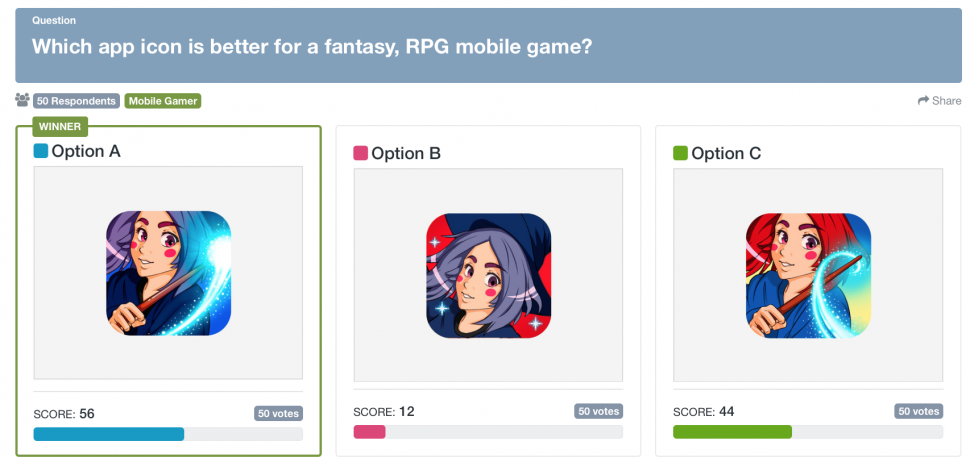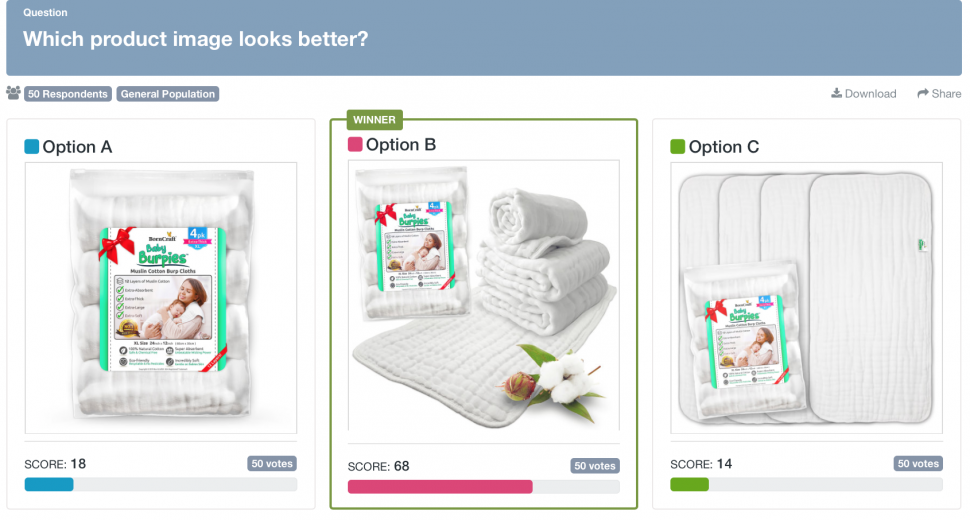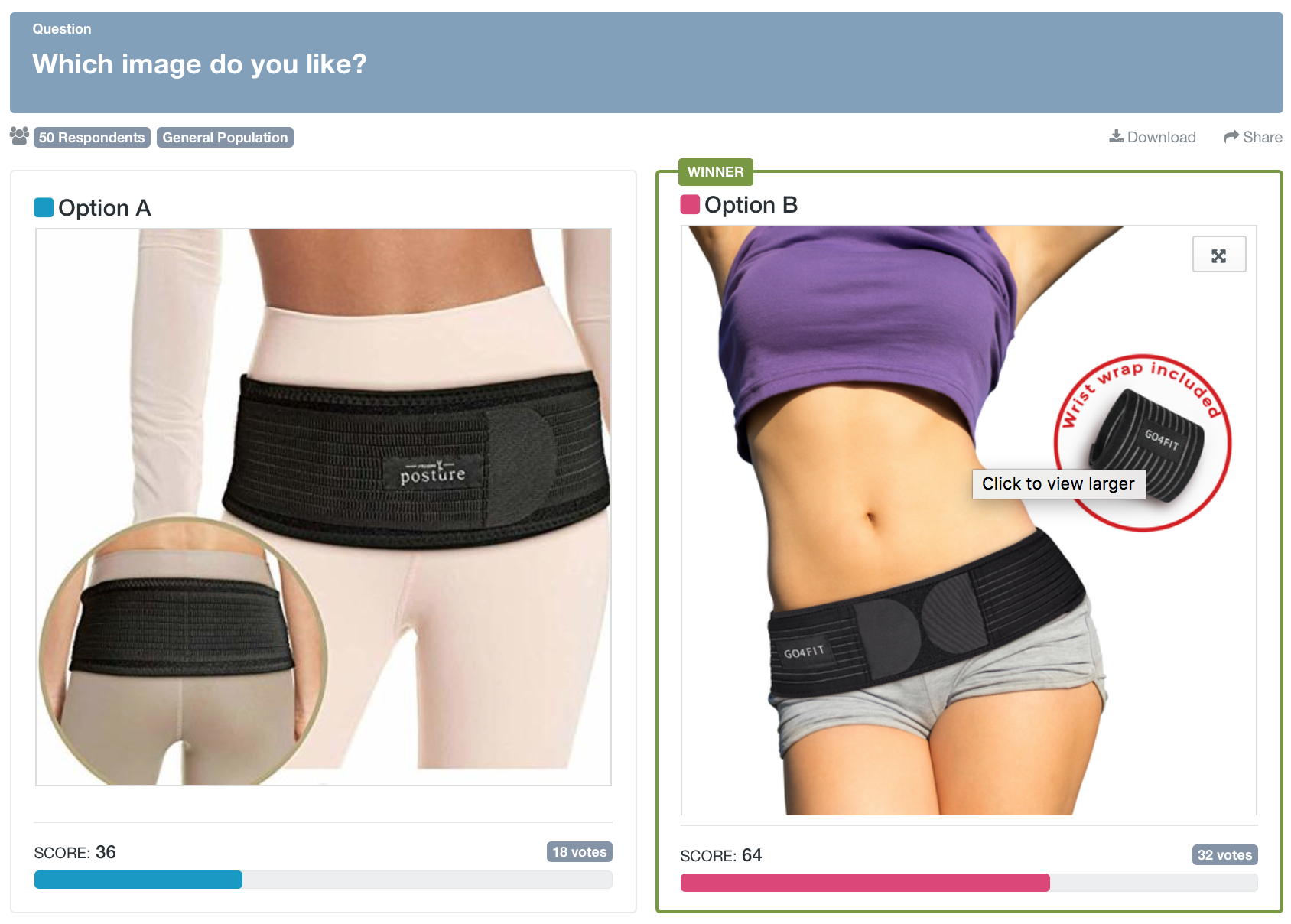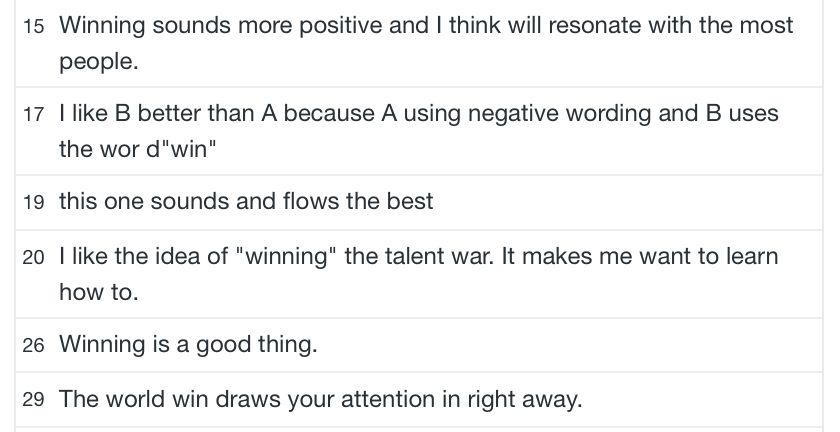If you’re an established brand, chances are you’ve created a focus group before to get feedback on a product or idea. You invited a group of participants, offered a reward, reserved a pleasant conference room, catered a light lunch, and hired a skilled moderator. You presented your product demos and the accompanying questions. Maybe each participant provided thoughtful, positive feedback and you left the focus group glowing.
But was that feedback genuine?
Here’s the thing about any type of meeting that takes place in person: the mix of personalities in the room might mean you’re not getting the feedback you need. If the majority of your participants seems to love the product, those who have concerns might feel nervous to speak up.
Why? Because it’s intimidating to hold an unpopular opinion. Plus, focus groups take time, money, and effort to orchestrate, and they might not be as helpful as you think.
But you definitely need to find a way to get the feedback you need. And that’s where an online focus group can swoop in and save you the trouble of an in-person meeting.
What is an online focus group?
In an online focus group, your brand can gather input from participants via an online platform. This can be email-based or chat-based, or you can test your product images, descriptions, variations, and usefulness on an established site.
Much like with an in-person focus group, you screen participants for demographic characteristics that match your product’s intended market. Then you present your product and ask the questions you would in a typical focus group. Your respondents still get compensation, but the entire process is much less expensive and time-consuming than a regular focus group.
Plus, your participants are likely to give honest feedback. Have you ever checked the comments below a controversial news article? People really get into the discussion, saying things from the safety of their phone or laptop screens that they never would in person.
That might not be so great for keeping your Facebook friends, but it’s wonderful for a focus group online.
How to create an online focus group
One of the best places to create an online focus group is PickFu, an online polling platform that enables you to quickly test your creative ideas with audiences that match your customer profile and target demographics.
With PickFu, you can
- Create an open-ended poll and ask specific questions to guide the feedback.
- Choose exactly who you want to provide feedback on your product, whether that’s Amazon Prime members, audiobook listeners, parents, dog owners, and much more. You name it, and PickFu’s probably got it as a focus group designation.
- Test various aspects of your product with split testing.
- Enjoy a larger focus group than you would be able to get in-person.
- Pay much less than you would for a typical focus group.
Writing a good question
It can be tricky to create questions that invite the quality feedback you want without narrowing your audience’s responses to the point where you’re eliminating the potential for a wide range of input.
Basically, you don’t want to invite biased results. Here’s how to craft questions that work.
Avoid leading words
A leading word in your poll pushes your respondent in a certain direction. Say you’re testing a new app that helps you to create and publish your own smoothie recipes. Leading questions would look like this:
- How much do you love this product idea?
- How much better is this app than its competitors?
Both of the above questions assume that the respondent loves the app and push for positive feedback only.
Instead, ask questions like
- On a scale of 1-5, with 1 being “I hate it” and 5 being “I love it”, please rate this product idea.
- Would you choose this product over a popular app like Simply Smoothies? Why or why not?
You basically need to eliminate as much bias and subjectivity from your questions as possible. Biased questions lead to biased answers, and that’s something you can’t afford if you want your brand to thrive.
Don’t assume
Never assume anything about your respondent. Making an assumption in your question looks like this:
- Since smoothies are much healthier than diet shakes, would you recommend this app over a diet shakes app?
You’re assuming that all respondents agree that smoothies are healthier than diet shakes. Set your bias aside and ask this instead:
- Would this app appeal to those who are interested in diet shakes such as Shakeology?
This question takes away the assumption and instead invites diet-shake lovers to honestly say whether they’d use a smoothie app. Not instead of their diet shake app, necessarily, but in addition to it.
Avoid double-barreled questions
A double-barreled question asks for feedback on two separate things at once, robbing the focus from one aspect of the product and creating confusion and ambiguity among respondents.
Here’s what a double-barreled question looks like:
- Which app icon and title is best for this smoothie app?
You’re asking for input on two totally different things at once. Instead, run a couple different polls and only ask for input on one aspect of your product at a time. This ensures that you’ll get relevant, focused responses on that one trait of your product.
- Which app icon makes you want to open this app?
- Which app title do you prefer?
For example, one PickFu user asked the simple, straightforward question, “Which app icon is better for a fantasy RPG mobile game?”
They gave a bit of background on what type of game the app represented and then asked which one their focus group liked better.
The results are clear!
What if your app is for a specific audience?
Maybe your smoothie-making app is designed for kid smoothie chefs. It can be tempting to ask something like
- Is this app icon kid-friendly?
While this isn’t exactly a biased question, it leads your respondents down a certain path and asks them to judge from a kid-friendly viewpoint. For best results and objectivity, simply state the target audience and ask a simple question, like this:
- This app is aimed for 10-14-year-olds. Which icon do you prefer?
Now the respondent has a piece of factual information that can help them formulate an answer but doesn’t necessarily influence it in a significant way. You’re still asking for their favorite icon, regardless of their age.
You can also pair a question like the one above with an audience of parents. Parents will immediately pick up on who the app’s audience is and think about their own preference and their kid’s preference when answering your question.
How to avoid receiving skewed feedback
To eliminate as much bias as you can, follow these tips.
Keep things consistent
Say you’re testing something like a product image with your online focus group. If you want to know which image people would click on, keep the images on the packaging itself consistent. Otherwise, the different photos could skew your results.
This PickFu user kept the packaging image the same on all the product listing image options. The only thing that changed in each option? The way the product was laid out. There are no variations in the product name, color, or other factors.
Respondents clearly favored Option B, and because the packaging itself was consistent in each photo, the PickFu user can trust that the poll remained unbiased.
Carefully select your PickFu audience
Earlier, we mentioned that you can choose from all sorts of audiences on PickFu. When you’re creating your online focus group, choose this audience with care.
Are you testing between two pamphlets to use for a real estate listing? Choose an audience of homeowners. It’s true that you’ll have homeowners in a general audience, but you’ll also have plenty of people uninterested in owning a home. They won’t give you the focused feedback that a targeted group of homeowners will.
One classic example of a PickFu audience providing skewed results starts with the following photo:
This person asked a general audience the simple question, “Which image do you like?” And yes, Option B won. But let’s look at the gender breakdown.
Female respondents overwhelmingly preferred Option A (represented by the blue color). Males loved Option B.
Men said things like, “Not going to lie – sex sells” and “I prefer this option because of the model. Her attractiveness better captures my attention.” In neither of the photos do you see the model’s face, so what this particular man finds attractive is the model’s sensual posture, plus her extra amount of bare skin compared to Option A’s model.
Women — the product’s intended market audience — disliked the very aspects of Option B that men adored. They said things like, “[Option B] looks like they are just using an appealing body to sell it. Option A looks much more appropriate” and “I need to know how it fits. I don’t need to see all that skin.”
You have to wonder what the results would’ve been like if the poll’s creator had chosen an audience of women, the intended target market. The results would’ve been more relevant, that’s for sure!
Look for recurring themes in the comments
If you were running an in-person focus group, your participants’ comments would be the heart of your study. It’s the same for an online focus group. Whether you’re running an open-ended poll or a split test, you’ll receive detailed feedback in the comments.
Read it all. Let it sink in. And then read it again. Look for recurring themes in the comments. Take this PickFu poll, for example.
The poll creator wanted to test two titles. In the feedback, respondents loved one certain aspect of the second option:
Clearly, people would rather win something than escape it. When you get recurring themes like this in your feedback, pay attention, even if it’s under the losing option. It’s the equivalent of one person making a comment in an in-person focus group and five other people nodding and saying, “Yes, I agree, this is the better feature.”
Create your first PickFu focus group today
It costs $50 to run a 50-person poll on PickFu. The price goes up a little bit if you choose a target audience, but it’s worth selecting a group of people with certain traits, as you would in a typical focus group.
Spending fifty to a hundred bucks on an online focus group session is much cheaper than compensating individual participants, renting a venue, hiring a moderator, catering lunch, and spending valuable time planning, setting up, and running the group.
Creating an online focus group on PickFu is easy and effective, so put aside your expensive in-person focus group plans and head over to create your first online focus group on PickFu.
The unbiased results you’ll receive will help you make smart choices for your brand — all without leaving the comfort of your office.












